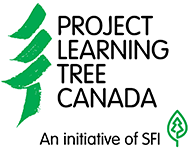![]()
BC Marine Trails Network Association




info@bcmarinetrails.org | (250) 323-3586
Website: www.bcmarinetrails.org
The BC Marine Trails is based on a three-pillar approach: First Nations engagement, stewardship and conservation on the BC coast, and safety of the trails.
Company History
1990
In the 1990s, Peter McGee, author of Kayak Routes of the Pacific Northwest Coast, introduced the concept of a linear route connecting Washington State to Alaska. To make this vision a reality, he gathered support within the paddling community and formed the BC Marine Trails Association (BCMTA). This group created our first two sites: a campsite at Blackberry Point on Valdez Island, complete with a fine composting toilet, and a rest stop on Saltspring Island. Despite enormous support from paddlers and companies, funding constraints and limited public interest meant the time was not quite right for BCMTA to take hold.
2007
Fast forward to 2007. With increasing private and commercial interest in limited site locations, the need for advocacy to protect public access to these places continued to grow. In 2008, the BC Marine Trails Network Association (BCMTNA) was formed, building off the efforts of the BCMTA. Composed of 8 directors and a ‘task force’ of representatives from 9 paddling clubs and other advisors, the BCMTNA began the massive task of identifying potential sites along the BC coastline, estimated to be over 27,000 km in length. Some of the important work at this time was completed by Nick Heath, our current Data Manager – this work formed the basis of today’s map.
2021
Today, our work continues, with over 3,100 sites catalogued. BCMTNA, now known more commonly as BC Marine Trails (BCMT), has over 800 members and counting. After a series of significant reorganizational changes by current President Paul Grey and the BCMT Board of Directors, we are well-positioned to achieve our vision of connecting the BC Coast.
Company Facts
What is a marine trail?
It’s a series of safe havens, rest areas, overnight campsites and launch or access points that allow someone to transit a part of the Coast.
How do you create one?
There are three parts to this: Safety, Access, and Continuity:
Safety first, always. We have created a safety standard based on what we think a paddler with moderate skills and endurance can achieve in a day, in good weather conditions. This equates to roughly 15 km or 8 nautical miles between campsites with safety stops (any type of site) positioned at 5 nautical miles apart. This is our safety criteria and how we look for sites. Once this criteria is satisfied we have a safe trail segment.
Access. Some sites are already on public land, while others are on private land or within First Nations traditional territories. We confirm permission to use a site, otherwise we won’t put it on our map.
Continuity. A trail needs multiple safe trail segments to traverse the coastline. As we connect the segments (or routes) we have a continuous marine trail.
What do you consider a site?
The great majority of overnight camping sites are small, undeveloped ‘wilderness’ sites that have no toilet facilities and are user-maintained.
How are sites identified?
Often it’s done by studying a map, looking for locations that could meet our safety distance requirements. The best way though, is when members of our community suggest them, based on their own coastal journeys. We offer training courses on how to review existing sites, and identify potential new ones. Click here to learn more.
What work do you do at sites?
We manage or co-manage a number of recreation sites. On managed sites, volunteers help install things like tent pads and composting toilets, which are funded by your donations. On natural or informal sites, sites are largely user-maintained. To help keep sites sustainable, we’ve developed a Marine Code of Conduct to inform and guide people. Click here to learn more.



